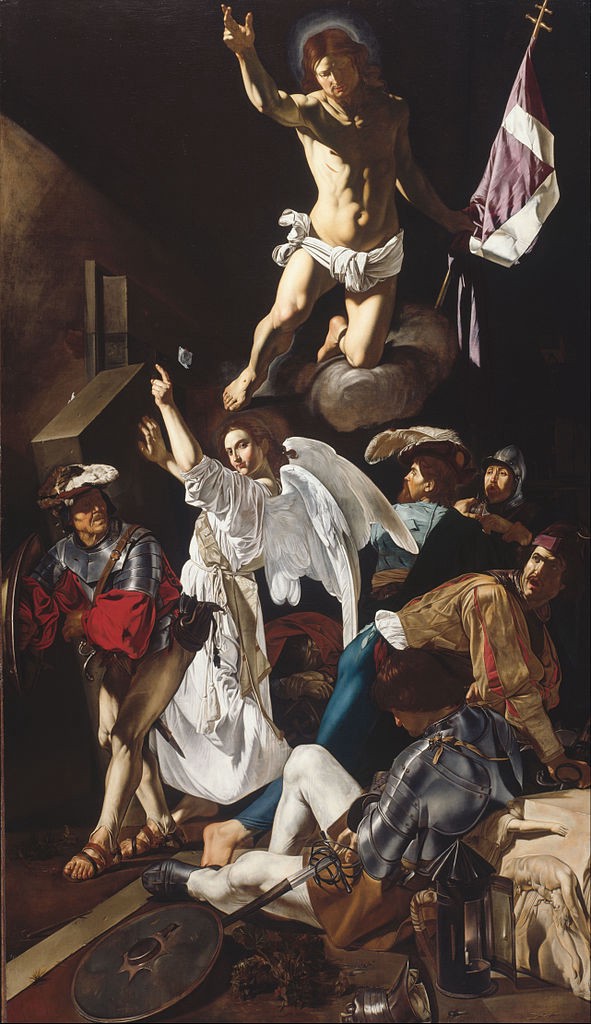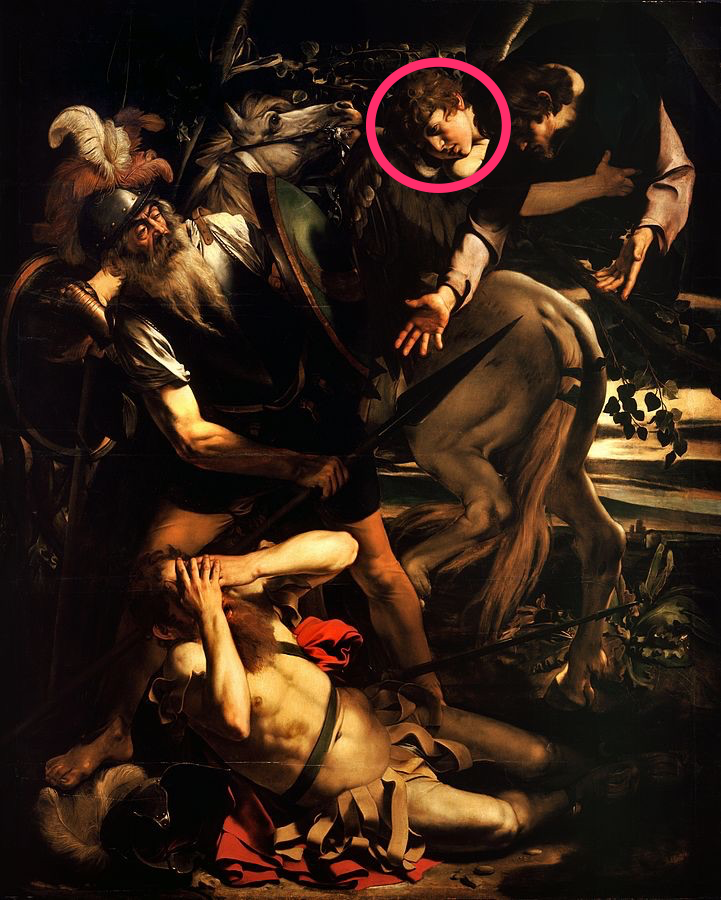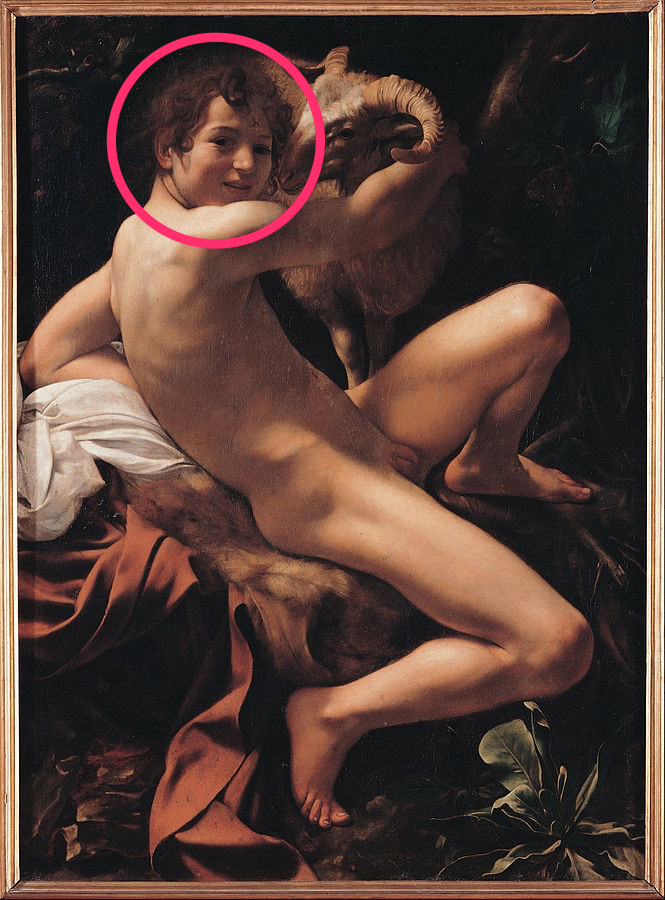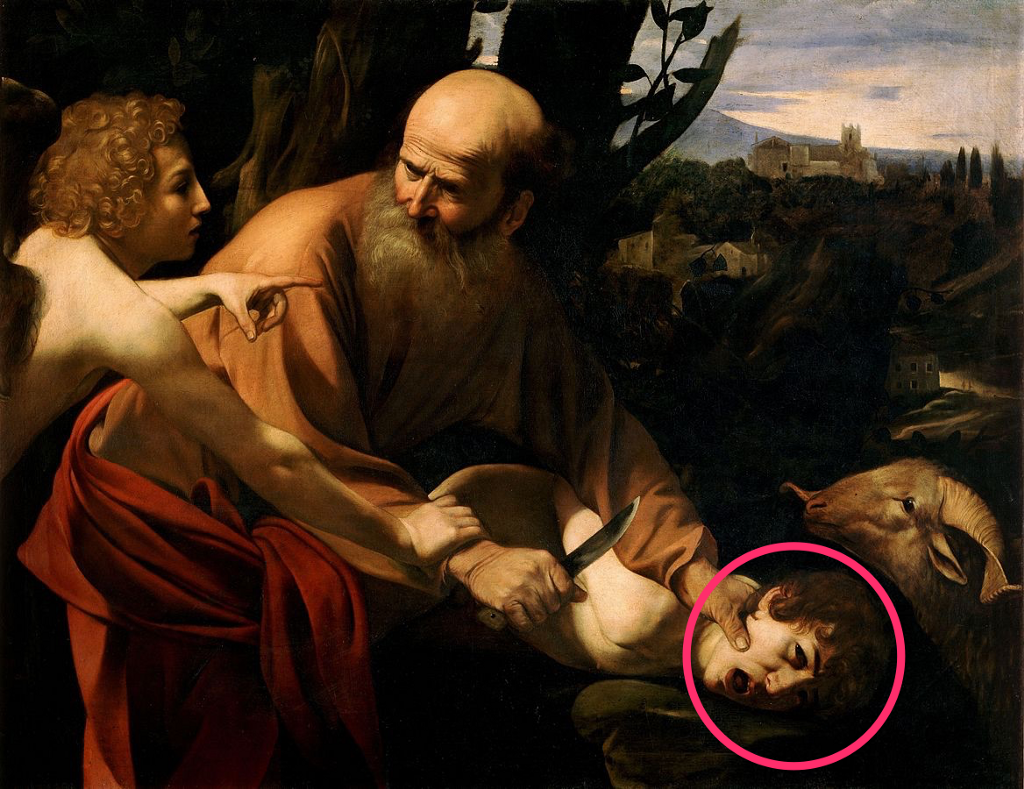Caravaggio's Boy
Who was Francesco Buoneri, and why did his face show up in so many of the famous painter’s canvases?

When Michelangelo Merisi da Caravaggio burst onto the artistic scene in 1590s Rome, it was like the invention of punk rock. From the start, his paintings carried the shock of the new. They combined realism and theatricality in a way that had never been attempted before. Caravaggio set his canvases in intimate, everyday spaces cast in shadow, and lit them with an intense, slanting light. They were stocked with figures easily recognized from the streets of Rome. Soon, dozens of artists were imitating his characteristic style. In time, they became known as the Caravaggisti, the followers of Caravaggio. A few, like Artemisia Gentileschi and Georges de La Tour, stand out for their excellence. Most have become footnotes in the annals of art history, gallery-filler to pass the time between Mannerism and the high points of the Baroque.
For centuries, Francesco Buoneri was a part of this mostly anonymous crowd. Although he seemed to be one of Caravaggio’s most talented followers, one could look in vain for any mention of him in biographical dictionaries. Some later scholars thought he might be French; others, that he was Lombard. Only a single painting, The Resurrection, now in the collection of the Art Institute of Chicago, bore his signature. Nothing more was known about him until the 1990s, when an Italian art historian named Gianni Papi connected Buoneri to another little-known Caravaggisto named Cecco del Caravaggio, and revealed the full importance of this shadowy figure on Caravaggio’s life and art. One key piece of evidence came from a parish census from 1605: Caravaggio was living with a young man named Francesco, listed in the register as his garzone, or boy (in the sense of pool- or errand-; Caravaggio had no children). Another detail came from a centuries-old piece of gossip.
In 1649, forty years after Caravaggio’s death, an English gentleman traveler named Richard Symonds came to Rome. He was an art-lover, and made a tour of all the papal cities’ major collections, taking careful notes of the paintings he saw. At the Palazzo Giustinian in Romei, he was shown the Amor Vincit Omnia, or Love Conquers All, from 1602. It shows a young boy, quite nude, dressed in eagle’s wings, perched on top of a small table, holding a bundle of arrows in his right hand. Someone in the Giustiniani family told Symonds an old legend about the work, which he scribbled down in his notebook. The model posing as cupid was one “Checco di Caravaggio.” As Symonds was told, Caravaggio painted him many times. Not only that, but Cecco was “his owne boy or servant that laid with him.” Cecco is a nickname, short for Francesco. In the census entry from 1605, Francesco appears to have been Caravaggio’s servant or apprentice. Apparently, he was also his lover. In time, Cecco became a painter in his own right. So close was their relationship with Caravaggio that he came to be known by the possessive: Cecco del Caravaggio.
The face of the boy from Amor Vincit crops up in a number of the master’s later paintings, as do those of several of his known assistants, as well as a few well-known Roman courtesans, all of which added to the notoriety of his work. Caravaggio didn’t just paint saints and holy virgins with torn clothes and dirty feet. He gave them the faces of prostitutes and beggars, easily recognized his patrons and rivals. In 1601, Buoneri is an angel, floating above Saul at the moment of his conversion. In 1602, he is John the Baptist. Triumphantly nude, he reclines on a lambskin while grasping a ram by the horns, in a pose better suited to a pagan bacchanal than a pre-Christian hermit. In 1603, he was Isaac about to have his throat cut by Abraham. In that same painting, X-rays have revealed that he was also the angel staying Abraham’s hand, before Caravaggio changed his hair and profile to hide the duplication.



Caravaggio’s most dramatic portrayal of Buoneri comes a few years later, in 1606, when he painted him as David holding the head of Goliath. At the time, Caravaggio was living in Naples, on the run from the law. The year before, he had killed a man named Ranuccio Tomassoni in a duel over a game of tennis, or a brawl about a debt, depending on if you listen to his enemies of his friends. Caravaggio offered the David to Cardinal Borghese, probably in an effort to secure a pardon so he could return to Rome. The painting is at once a remembrance, and a plea for mercy: David holds the severed head of Goliath aloft in his hand, and Caravaggio’s own face is on the giant’s head.
It’s not certain whether Buoneri accompanied Caravaggio on his flight south (Papi thinks he might have, but there’s no proof). But Caravaggio only had a few tumultuous years left: From Naples he moved to Malta, where he worked for the Knights of Saint John, painting portraits and altarpieces, before a mysterious falling-out forced him to flee to Sicily. From Sicily he went back to Naples, where he was attacked by unknown assailants. In 1610, some rumor of pardon, perhaps from Scipione Borghese, prompted him to return to Rome. On the way, he died of fever, supposedly (the reports come from rumors relayed by private newsletters) while staggering along a Tuscan beach in pursuit of the boat that was supposed to take him home.
Buoneri became a painter of note, if not renown. Little of his biography from these years has been reconstructed with certainty — if not for his surviving paintings, he would be a ghost. The Resurrection, which was originally painted for Piero Giucciardini, the Tuscan ambassador to the Papal Court, remains his greatest work. It. Giucciardini rejected it — why is unclear — and it ended up in the Scipione Borghese’s collection. The moment it portrays comes from the moment in the Gospel of Matthew, when a powerful tremor announced the return of Christ. The relevant passage reads: “There was a violent earthquake, for an angel of the Lord came down from heaven, and, going to the tomb, rolled back the stone and sat on it. His appearance was like lightning and his clothes were white as snow. The guards were so afraid of him that they shook and became like dead men.”
The Resurrection is an odd composition, as interesting for what it conceals as for what it reveals. Bunoneri seems more concerned with muscular legs and coy glances than any action involving the return of Christ from the dead. The action takes place in a darkened interior which seems to represent the tomb. A beam of bright light illuminates the scene from the left. Three of the soldiers are startled; one continues his slumber. The viewer pays more attention to cloth and color — the white of the angel’s wings, the bright turquoise of a soldier’s tights. And the thing that most attracts the eye is the face of the angel at the painting’s center. His expression is difficult to discern. Is it knowing, complicit, sly, winking? It seems full of hidden knowledge, as if a secret were being passed between figure and viewer. In Caravaggio’s paintings, Francesco appeared as a victim and a conqueror, but most often as an angel — a messenger. Is this the secret the angel’s glance conveys, the awareness gained from a life as a model and a painter? Or is it something else?
Many of the art historians involved in Caravaggio’s twentieth-century revival have been at pains to deny his homosexuality. Buoneri, so long hidden in the shadows, hasn’t garnered the same attention. The precise nature of the relationship between them will probably remain shrouded in mystery. For one thing, they left hardly a word of personal testimony. For another, they lived at a time before sexualities had hardened into concrete identities, in a place where male love was both widely practiced and a crime.
The paintings tell their own story though. Just as many of Shakespeare’s sonnets are shadowed by the invisible presence of the ‘fair youth’ to whom they are addressed, Caravaggio’s canvases speak a language of the flesh their original viewers would have understood. A few years ago a German visitor to the Uffizi, confronted with Caravaggio’s Bacchus, itself a youthful self-portrait, collapsed in a fit, overwhelmed by uncontrollable sexual desire.
Buoneri’s Resurrection in Chicago might be too demure to stimulate such transports, but it is all the more interesting for what it conceals. Over the years, it has had many lives. It has been a figure for worship, a rejected commission, an object of delectation, an occasion for connoisseurship. Whatever secrets it has left to tell live in the paint, in the form of coded glances and silent sounds.
